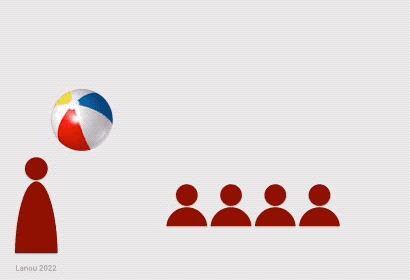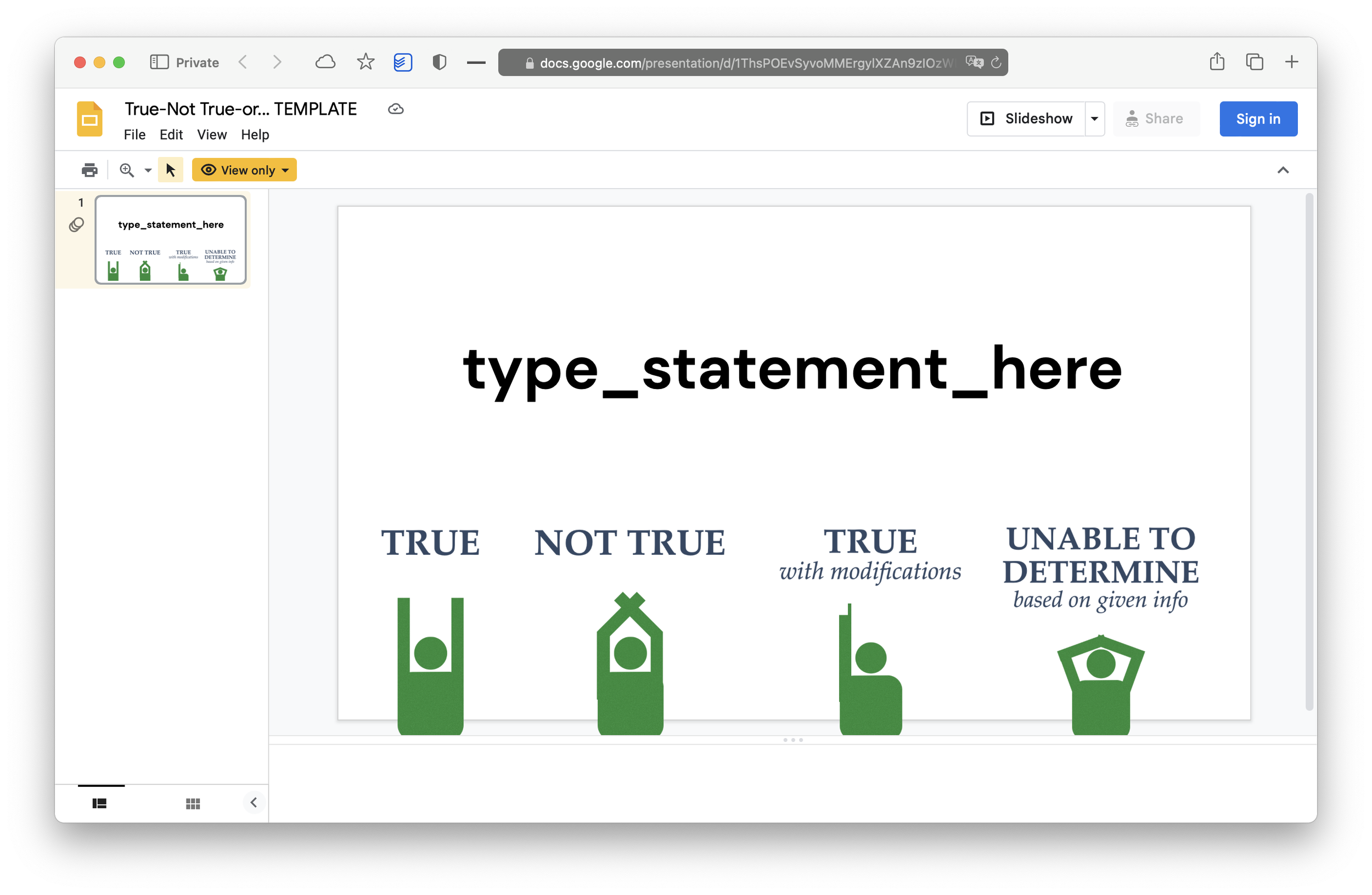True, Not True, or…? An Engagement Strategy for Total Student Participation
“No significant learning can occur without a significant relationship.”
This quote is from pioneering child psychiatrist, Dr. James Comer.
So over to you—do you think that’s true, or do you disagree completely? Or, is it somewhere in between? Perhaps you think Dr. Comer is onto something, but you can only say that his statement is true with modifications? Alternatively, would you need more information to determine your reaction to this statement? If so, what information would you need?
It would make for a fascinating discussion if a group of educators were to share their take on this quote: do they think it’s true, not true, true-ish, or what more information might they need to form a response. Everyone would be able to respond and would have an entry into a discussion.
How can we apply this to student discussion in the inclusive classroom? Good thing there’s a total participation technique for that!
The Quest for Total Student Participation
Image: Komiksove-Bubliny
How many times have you asked an important, well-framed question to a class of students… and only two hands go up?
Or had what felt like a terrific whole-class discussion with piggybacking comments and productive disagreements… only to realize that out of your 30 students, only about 7 actually contributed?
The goal many teachers have is to meaningfully involve everyone in an in-depth whole-class discussion. But as many teachers know, it can be a challenge to get all students involved and sharing their ideas.
Most teachers probably strike for this total student participation in a class discussion, but how is that actually achieved?
There are many approaches to get closer to that elusive whole-class discussion with total student participation. One terrific way uses the technique we explored above:
You start by sharing a thought provoking statement, for which there is no objective right or wrong answer. Then you ask that all students respond, silently and simultaneously, by holding up a card with one of these four options: true, not true, true with modifications, or unable to determine. Once everyone has held up their card, you can open it up to discussion by asking students to talk to a partner or their table or to start hearing from the whole class—knowing that every single student is committed to some response and has a thought they can share.
This technique is called True-Not True Hold Ups from Persida & William Himmele. Read on to learn how to use it in your class.
True/Not True Hold Ups: A Technique for Total Student Participation
Let’s first start with a trap many of us fall prey to: the trap of bouncing back and forth between the teacher and individual students when facilitating classroom discussions. Researchers William and Pérsida Himmele call this “beach ball teaching”:
The teacher asks a question, and one student responds. The teacher adds on or asks for more thoughts, and it returns to one student. Some eager students put their hands up, waiting to be called on. Others hope not to be because they’re nervous or feel unprepared. Some students that aren’t talking are indeed listening and following, while several others are tuned out.
The good news is that there are lots of ways to avoid the beach ball and get all students participating. True-Not True Hold Ups provides a structured way to give every student an opening to contribute and respond to their classmates. Let’s look at how to use it.
Researchers Persida & William Himmele describe this strategy in their terrific book, Total Participation Techniques. Here are step-by-step directions to use this strategy in your classroom:
Setting Up
Compose a provocative statement about the content you’re teaching to prompt robust discussion. Statements should be open-ended, without a right-wrong answer, like:
For students in grades 3–5: “The scientific method is the way for humans to answer all questions about the universe.”
For students in middle and high school: “The Industrial Revolution led to significant progress for society.”
Distribute the cards to every student
Responding to the Statement
Display the statement on the board and read it aloud
Provide students with think time to consider their response
Ask all students to respond by holding up one of the four cards in 3… 2… 1!
Ask students to keep the cards up and look around the room to see the variety—or pattern—of responses
Digging in to Responses
Extend the response by having students:
Turn and talk to a partner about why they responded the way they did
Find a partner with a different response and hash out their responses
Form a group with one of each response (or close to it) and explore one another’s reasoning
Consider challenging groups to modify the statement to make it true-er
Then you can conduct a whole-class discussion—this time with everyone having responded and listened to another viewpoint so there’s lots to share out. Ask discussion questions like:
“What was your response and why?”
“Was your response impacted by your partner?”
“What is a true-er statement we could construct that would get everyone to agree?”
This structure gives everyone an opportunity to come up with some kind of response (that feels true to them) and engages all students in total student participation.
Adapting True/Not True to Engage All Students
In their book, Total Participation Techniques, Himmele & Himmele provide sample cards that teachers can print.
I’ve created adapted cards with symbols that can make it easier for students to respond and for teachers to quickly scan the room.
But what happens if you don’t have the cards or materials to get total participation in the classroom?
If you find yourself in a situation where you don’t have enough cards for everyone—or you just can’t find them—another alternative to consider is this: define gestures that represent each of the four responses and teach students to respond with their hands or bodies.
For example:
True becomes two arms raised
Not True becomes arms crossed overhead
True with Modifications becomes a raised finger
Unable to Determine becomes two hands on your head
The True/Not True gestures
Of course, we must be mindful of students with motor differences that would make it challenging to respond in this way. And for students who are non-speaking, you can program these responses into a student’s AAC device if they use one.
You can download a Google Slides template with the four gesture responses below!
Now that you’ve learned how to create total student participation using True/Not True Hold Ups, watch those hands fly up! You may even find yourself in a situation where you have so much participation, that you have a new challenge on your hands. (Wouldn’t that be nice?)
Want more resources?
Check out more examples of engaging all students in my Active & Interactive Learning case study.
And see the Himmele & Himmele Total Participation website for more on their great work.
Google Slides Template
A True / Not True… template showing the four gestures — for you!





